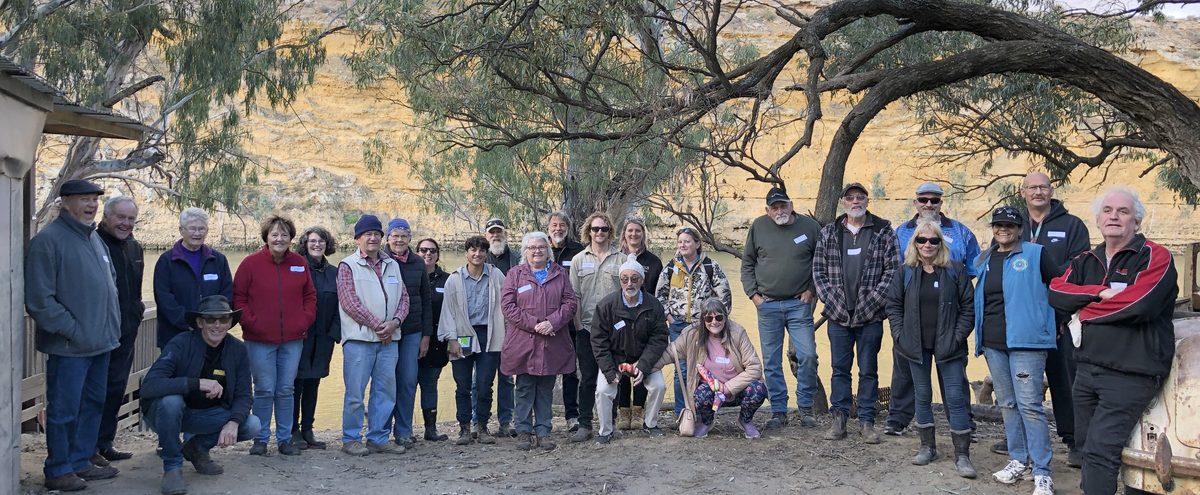This month become a citizen scientist!

April is citizen science month, but what really is citizen science? And how can you get involved? Read on to find out the answers.
Australian Citizen Science Association (ACSA), describes citizen science as public participation and collaboration in scientific research with the aim to increase scientific knowledge. Citizen science provides an opportunity for everyday people to come together to collect data, make discoveries, and explore the natural world for projects that benefit scientific research.
In essence, it empowers adults and children alike to play an active role in scientific exploration. Whether you're experienced or just a curious enthusiast, there are a lot of ways to engage in citizen science and make a meaningful impact.
One of the most common ways to get involved is with data collection. Citizen scientists can participate in various monitoring and data collection programs, ranging from bird surveys to assessing water quality in local environments. By volunteering your time and efforts, you’ll contribute valuable data that researchers can analyse to gain insights into pressing scientific questions.
Thanks to modern technology, citizen science is more accessible and getting involved has never been easier. Smartphone apps, online platforms, and community-based initiatives provide ways to participate in scientific research from anywhere in the world. Whether you're documenting biodiversity in your local area or recording frog calls in our region, there's a citizen science project suited to your interests, location and the time you have available.

Are there other benefits besides helping researchers?
Many citizen science projects take place outdoors, which is an excellent way to connect with nature and to enjoy all the benefits it brings to your mental and physical health. A publication by Heather Eliassen - professor of nutrition and epidemiology at Harvard T.H. Chan School of Public Health, said that some of the benefits of time spent outside can include “improvements in sleep, blood pressure, cognitive function and physical activity, as well as reduced risks of chronic disease, such as type 2 diabetes, cardiovascular disease and cancer.”
So, it turns out you’re not only helping environmental scientists by gathering data, you’re improving your health and well-being by getting closer to nature and the natural world around you.
Also, citizen science is a great way to meet like-minded people and connect people to communities and the places we inhabit.
What’s holding you back? You too can be a part of One Million Acts of Science around the world for Citizen Science Month.

How can you become a citizen scientist?
To start you can select a project that aligns with your interests and passions. Whether you’d like to learn about water quality, frogs, turtles, fungi or soil, we have a project waiting for your contributions.
Here are a few projects to get you started:
- WaterWatch and Waterbug Bioblitz Events – WaterWatch is a national citizen science project that engages schools and community groups, along with landholders and interested individuals in monitoring and protecting the health of their local waterways. The data collected by Waterwatchers
gives us a picture of river flow and water and quality from rivers and wetlands in our region.
- Frog Monitoring with FrogwatchSA - FrogWatch SA is a collaboration of state, local government and non-government organisations that aims to give us a more comprehensive understanding of how our frogs are tracking over time. By using FrogWatch SA’s FrogSpotter app you can learn about South Australia’s frogs, help collect essential knowledge about them and help us better understand the condition of the environments they’re dependent on. All you need is your smart phone - the app is free, easy to use and open to anyone.
- TurtleSAT – This citizen science tool provides an opportunity for people to record freshwater turtle sightings and nesting locations and link with the 1 Million Turtles Community Conservation program. These records will help us understand where turtles are, the threats they are facing, and where and when they are nesting.

- Fungi monitoring with FungiMap – Whether you are experienced in identifying fungi, keen to learn, or just love photographing those beautiful colours and textures and want to know what species they are. Adding your images to Fungimap will contribute to a better understanding of fungi species and their population trends across the Murraylands and Riverland region.
- Getting the dirt on soil health – Running in springtime, this program engages community members in the Murraylands and Riverland to investigate the health of soils on their property with a free soil testing kit. By participating, you’ll get an indication of the health of your soils.
- Help save the Murray-Darling carpet python – We need your help!
We’re working to develop a better understanding of the current distribution of Murray-Darling carpet pythons in South Australia. This information will help our ecologists to find out what habitat they may prefer and what their breeding and overwintering requirements might be. That’s when you come in - we’re calling on community members to log their Murray-Darling carpet python sightings using our online form. - iNaturalist – This app allows you to discover more about any part of your local biodiversity that takes your fancy, and a community of knowledgeable folks will help with the identification work. Insect photos are particularly needed as we know so little about these important and interesting creatures in our local environments.

This April, as we celebrate Citizen Science Month, consider joining a citizen science activity and making a difference through scientific exploration. Happy citizen science month, and may your curiosity lead you to new discoveries and adventures!


